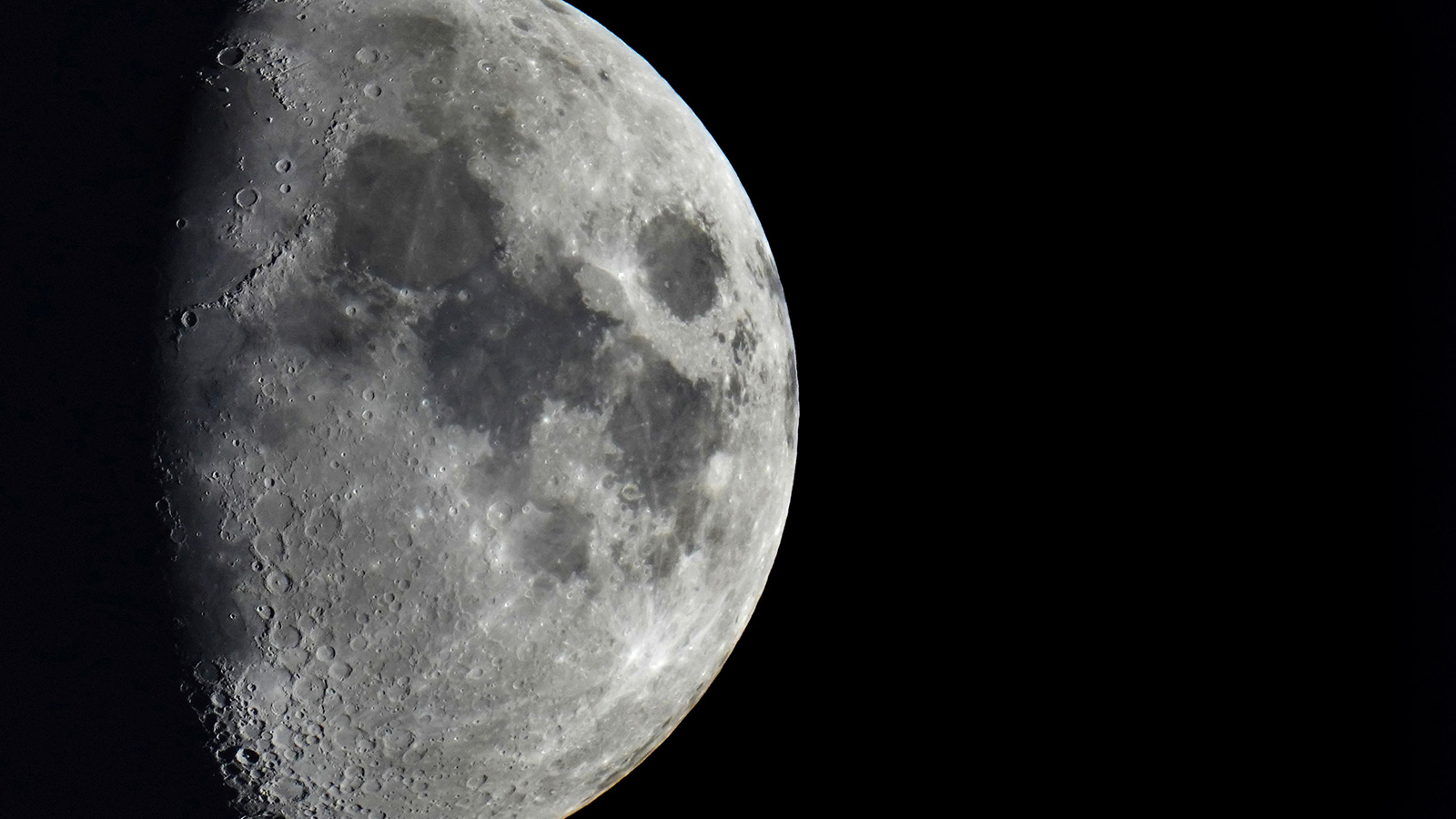Parts of the moon may provide stable temperatures for humans, researchers find
(CNN) — In early human history, caves provided people with protection from the elements and a place to call home. Now, similar formations on the moon could provide pioneering astronauts with a lunar safe haven, thanks to their Earth-like temperatures.
The moon has pits with shaded areas that steadily hover around 63 degrees Fahrenheit (17 degrees Celsius), a temperate range that’s stable for humans, found researchers at the University of California, Los Angeles. The journal Geophysical Research Letters published the study in July.
These pit craters, which may potentially lead to caves that could also provide human shelter, have temperatures that could make lunar exploration and long-term human habitation on the moon safer, as scientists would be able to set up thermally stable base camps.
“Humans evolved living in caves, and to caves we might return when we live on the moon,” said study coauthor David Paige, professor of planetary science at UCLA, in a news release. Paige also leads the Diviner Lunar Radiometer Experiment, an instrument on NASA’s Lunar Reconnaissance Orbiter.
Now that there is a better understanding of the pits and potential caves, scientists could possibly pick up the pace toward conceptualizing a workable permanent station, protected from the extreme conditions of the moon’s surface.
“We could be able to establish a long-term presence on the moon sooner than may have otherwise been possible,” said lead study author Tyler Horvath, a doctoral student in planetary science at UCLA.
Unlike the moon’s surface, which heats up to 260 degrees Fahrenheit (127 degrees Celsius) during the day and drops to minus 280 degrees Fahrenheit (minus 173 degrees Celsius) at night, these lunar pits in the Mare Tranquillitatis region have a human-friendly, stable temperature.
(Mare Tranquillitatis, commonly known as the Sea of Tranquility, is where Apollo 11, the first mission to put humans on the moon, landed due to its smooth and relatively flat terrain.)
The data comes from an analysis of images taken by NASA’s Lunar Reconnaissance Orbiter spacecraft and computer modeling.
“These (pits) are right at the resolution limit of the cameras that they’re trying to use,” said Briony Horgan, associate professor of Earth, atmospheric and planetary sciences at Purdue University in West Lafayette, Indiana. “The fact that they are able to pull that data out and show that it was pretty convincing, I think it’s a big step forward in looking at the moon.”
Learning about these pits and probable caves helps scientists better understand how other extreme environments behave, such as the lunar polar regions where the Artemis mission is going, said Noah Petro, chief of NASA’s Planetary Geology, Geophysics and Geochemistry Lab. The NASA Artemis program aims to return humans to the moon and land the first woman and first person of color on the lunar surface by 2025.
“Artemis has the goal of sending humans to the region around the South Pole, where we know there are some very cold places,” said Petro via email. “Fortunately, we have a large amount of data for the south pole region where Artemis will visit.”
Give me shelter
The extreme temperatures of the moon’s surface have made it difficult for NASA to create fully operational heating and cooling equipment that would produce enough power to allow for longer-term lunar exploration or habitation, according to the news release. However, NASA may not need equipment as complex as currently assumed to make exploration and habitation a reality, this research has shown.
With the help of the lunar orbiter, scientists discovered pits on the moon in 2009, a finding that prompted scientists to wonder if there were connecting caves that could be explored or even used as shelters.
“About 16 of the more than 200 pits are probably collapsed lava tubes,” Horvath said in the news release.
When a lava tube — a long, hollow tunnel and cavelike structure formed by lava — collapses, it opens a pit that can create an entrance to the rest of the cave.
There are at least two, likely three, pits that have overhangs that lead to caves, the release said.
Caves would be a stable environment for lunar habitats since they offer some protection from solar radiation and micrometeorite impacts, Horgan said. These formations could also provide a measure of protection against cosmic rays, according to NASA.
It would be helpful to build on the current research with radar data to find additional potential caves, Horgan added.
The research “gives engineers who are really thinking about how to design a habitat on the moon real numbers to work with,” she said. “That’ll be incredibly important going forward.”
Currently, NASA has plans for robotic exploration on the moon through its Commercial Lunar Payload Services program. Starting in December 2022, cargo flights will deliver devices that navigate and map the lunar surface, conduct investigations, measure radiation levels and assess how human activity impacts the moon. These flights give scientists the ability to reach anywhere on the lunar surface, including Mare Tranquillitatis, Petro said.
“Continuing to map the temperature of the lunar surface is a high priority for LRO, as we’ll be able to use that information not only to better understand the environment future missions to the surface will experience,” Petro said, “but we can also learn about how different types of surface material respond to the changing lighting conditions at the lunar surface.”
